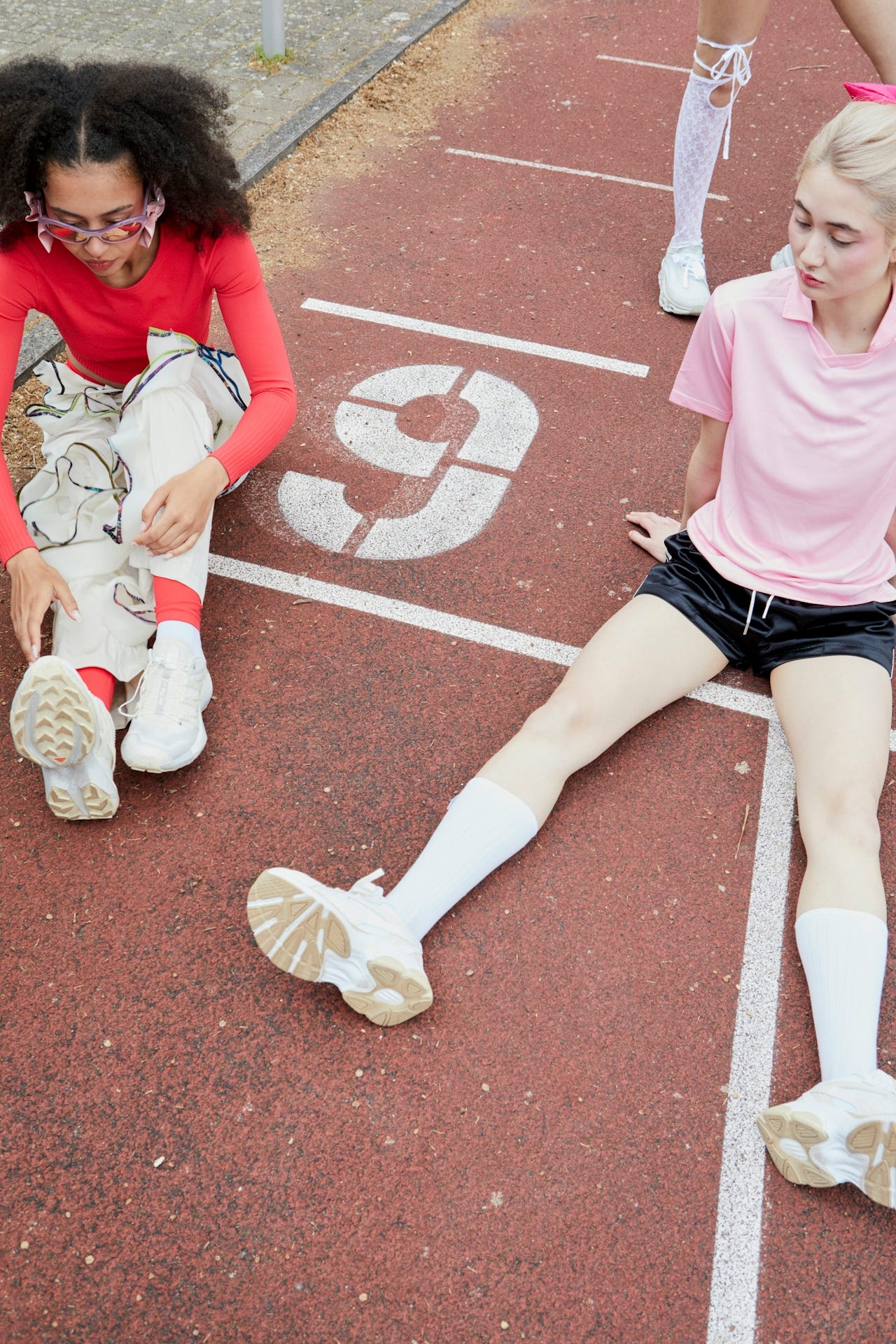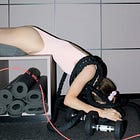Well Well Well is on its summer break ☀️ Paid subscriptions are paused, and I’m sharing an edition from the archive each week. This week’s is from October 2022.
Last week, on World Mental Health Day, mindfulness app Calm and sportswear brand Adidas announced a collaboration. The idea being that physical fitness supports mental health and vice versa. ‘Mental and physical wellbeing are deeply intertwined, yet often supported separately,’ said Fergal Walker of Calm. ‘Our partnership with Adidas will begin to bring mental and physical health closer together.’
This marks a further step in the wider social understanding that movement is as much for your mind as it is for your body, and it’s particularly important for those of us who (often quite proudly) define ourselves as ‘not sporty’ or even ‘lazy’.
I am one of those people. At school, I’d forge notes from my parents to get out of PE, I’d pretend to have my period when it was swimming, I’d even hide in the toilets on sports day. And it doesn’t take a scientist of human behaviour to work out that kids who hate PE grow into adults who don’t exercise.
I like to think that physical education has come a long way since I was at school. My kids talk about 5-a-Day Fitness and Cosmic Kids Yoga, both brilliant initiatives that are focused on fun, and are clearly as much for mental wellbeing as they are for the physical.
But, last month, a Slate article bemoaned the situation in the US. ‘School-based physical education continues to disappoint many kids, registering as a waste of time for the athletically inclined, and traumatic for those who are less so,’ it said. ‘PE presents a particularly ripe opportunity for bullying… it facilitates the teasing of overweight or unathletic kids.’ Encouraging kids into sport is generally seen as a ‘good thing’, but the very nature of sport is that there are winners and losers, and people are selected for the team (or not) based on their ability.
Perhaps it was this fear that made me (and many like me) avoid PE at all costs. Rather than suffer the humiliation of not being picked for a team, I went the other way, smoking behind the bike sheds while making snarky remarks about the sporty kids. In an ideal world, we’d see each child as an individual and encourage those who are particularly sporty to succeed, while letting other kids do yoga or dance or non-competitive running or weight training… whatever they enjoy. But that is unlikely to happen in a system that places little value on physical education.
Over the past few decades, public health messaging around exercise was always focused on using it to offset a calorific diet. Which meant, not only did people feel they could eat lots of rubbish and still be healthy as long as they exercised, but others felt that they didn’t need to exercise as long as they ate well. Both groups of people have been let down.
And writing a book about breast cancer has hammered home for me just how important this is. In almost every area, expert advice is the the same:
To reduce your risk of recurrence? Exercise.
To manage menopause symptoms? Exercise.
To prepare for and recover from chemo and surgery? Exercise.
To manage anxiety and depression after treatment? Exercise exercise exercise.
I still struggle with psychological blocks around it, and the deeply ingrained belief that it’s just ‘not me’. So I have developed a strategy that is all about making it easy or enjoyable - and ideally both.
There is now a dumbbell and a yoga mat in my living room and, when I have a spare ten minutes, I do some squats, lunges, bicep curls or a few yoga poses. That’s easy.
I also discovered Pilates, and love the feeling of being stretched out on a reformer machine. The fact that my local studio plays ‘90s bangers is an extra joy. That’s fun.
And popping on my headphones to run around the block while listening to a podcast, an audiobook, or three of my current favourite songs is both easy and fun.
So if, like me, you don’t think exercise is for you, identify the easiest and most fun ways that you can move your body today. I promise it’s worth it.
When I wrote this, my kids were 5 and 7 and loved moving their bodies. Now they’re 8 and 10, and I can see the type of things that put me off exercise happening to them. My son opted out of the sprint races at sports day because he knows he’s not the fastest, while my daughter loves gymnastics but, at the last session, everyone else got a different certificate to her because she’s the only one who can’t yet do a cartwheel 💔 Any tips on how to keep my kids engaged in movement when everyone around them is trying to make it competitive??









We wrote a blog about this topic, and asked parents what they thought. There's a lot of emphasis on the evils of screens, but making movement/activity non-competitive, and embedding it throughout the day (not just in PE lessons) could make a difference. Active travel also very important for this generation (blog link: https://www.wcrf.org/about-us/news-and-blogs/how-can-we-help-teenagers-to-be-more-active/)
Unfortunately being forced to do "cross country" running alongside a major dual carriageway whilst wearing those dreadful 80s PE knickers killed any love of running for me, the amount of lorry drivers beeping and shouting things at us! We used to sneak off into Woolies for pick and mix. I remember even our parents asking if we could wear the gym skirts over the top and the PE teacher saying no. My daughter is now 15 and from year 10 her school gets it right I think- you can choose from lots of activities, all they want you to do is enjoy something - you have the usual stuff like netball, tennis, swimming but also things like volleyball, table tennis, climbing wall. You choose something different every half term. I wish I had had that!